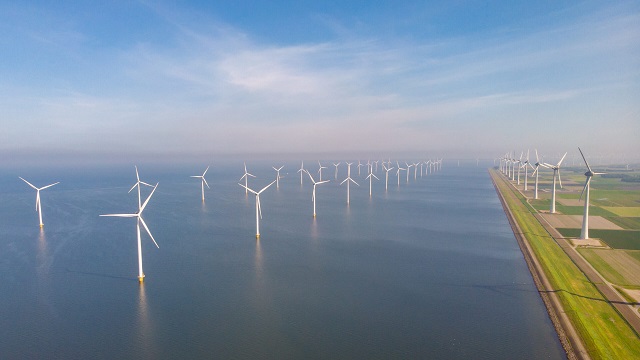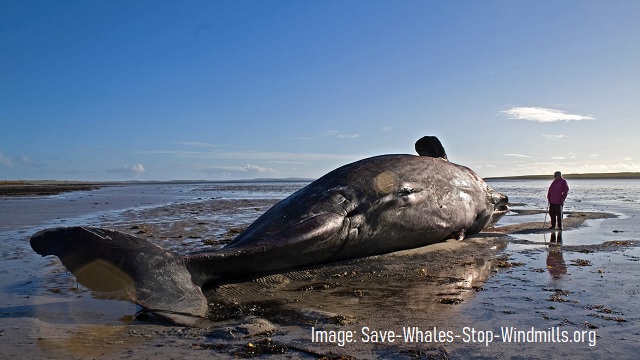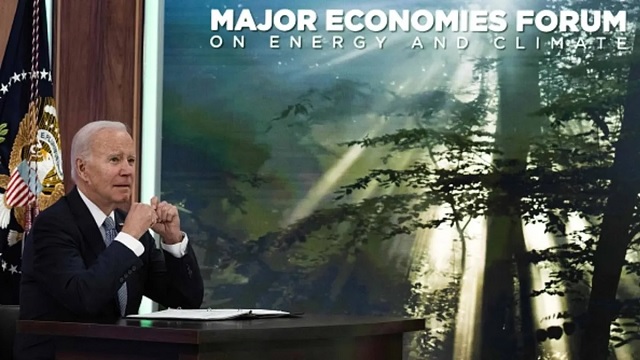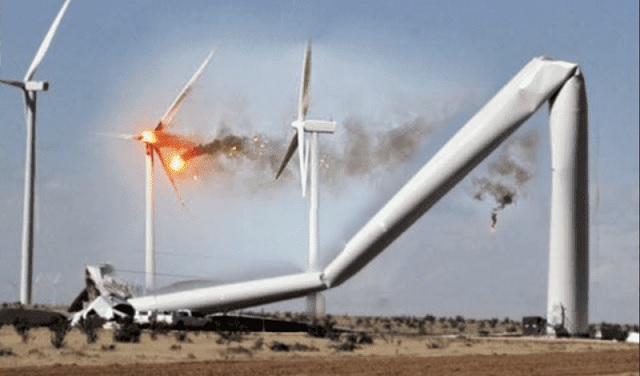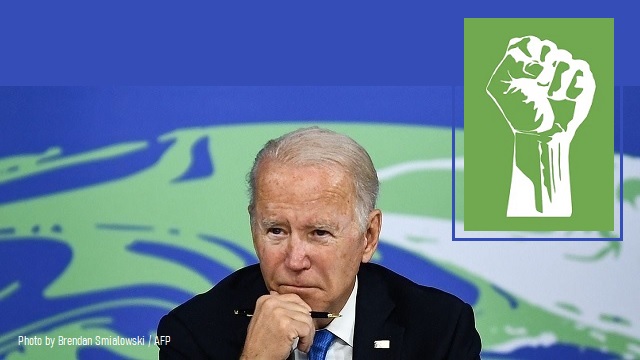
As more and more in society have drifted away from a belief in God the void needs to be filled for most human beings. The environment, Crichton said, has filled the void for many. Conventional Judeo-Christian religion began with a perfect world called Eden. Today’s environmentalist sees sustainability as the salvation in the church of the environment, attempting to return to a fictional world of past perfection.
Michael Crichton, well known for his books Jurassic Park, Andromeda Stain, movies of those books and others and the award winning TV series ER, received his medical degree from Harvard but never practiced. Instead he wrote and directed movies and TV full time. He died of cancer in 2008.
He had a number if serious environmental concerns which lead him to write STATE FEAR a novel that addressed the realities of concerns about Global Warming. In September of 2003 he presented a lecture to the Commonwealth Club of San Francisco titled ENVIRONMENTALISM AS RELIGION.
Because our newly elected administration in Washington DC is doubling down on all environmental regulations as fast as possible, it is worth refocusing on the wisdom of Michael Crichton in order to place the actions of this administration into a perspective that will serve us well.
He stated initially that the greatest problem facing the world is not likely one you have considered. In his opinion it is separating truth from fiction. Bombarded daily, more today than when he was speaking, with information that can not easily be separated from either misinformation of disinformation. The first not necessarily intended to fool and the second definitely intended. In either case we have to think critically in order to decide for ourselves.
They often paint America of the indigenous peoples before the Europeans came as a dreamy world of unspoiled nature. Historians now tell us that was anything but true as little of the natural world was cared for. Herds of animals were destroyed, lands were burned and tribal wars were common and inhumane . Loving, peaceful and harmonious were not words to apply.
In short Crichton tells us “-the romantic view of the natural world as a blissful Eden is only held by people who have no actual experience of nature. People who live in nature are not romantic about it at all.” They know how difficult survival can be. The TV producers have been very successful showing this to us for years.
The truth is that almost no one wants to experience real nature. They want to spend a week or two in a cabin in the woods with screens and windows, or a river rafting trip for a few days with someone else doing the cooking.
One way Crichton says “to measure the prevalence of fantasy is to note the number of people who die because they haven’t the least knowledge of how nature really is.”
A decade ago I was almost one of them attempting a rim to rim Grand Canyon hike within 24 hours. Park rangers rescued me on the way out after 20 hours informing me there had been a dozen fatalities the previous year. I said I was an Ironman Triathlete and they laughed.
Crichton was the first to recognize in 2003 that one scare story was already loosing its grip on the world. That was over population. In the early 1990s the fear-mongers were predicting we were on our way to a population of 12 to 15 billion which we would not be able feed. The predicted numbers had then fallen below 10 billion while agriculture yields had risen dramatically eliminating fears of starvation. Today we have become more concerned with the economic problems created by a shrinking population.
It wasn’t just one prediction the so-called environmentalists got wrong, there have been a slew of them. He said they told us we would run out of oil and other natural resources and starvation would become the order of the day. What he told us in 2003 as to their absurdly wrong predictions for the past year of 2020 have proved ludicrous. They include a temperature rise of 5.4 degrees Fahrenheit, a doubling of CO2, elimination of snow on Mt. Kilimanjaro, a two foot sea level rise in Florida, end of ice on the Arctic sea and the end of glaciers in Glacier National Park.
Crichton asked his audience “with so many past failures, you might think that environmental prediction would become more cautious. But not if its a religion. Remember, the nut on the sidewalk carrying the placard that predicts the end of the world doesn’t quit when the world doesn’t end on the day he expects. He just changes his placard, sets a new doomsday date, and goes back to walking the streets. One of the defining features of religion is that your beliefs are not troubled by facts, because they have nothing to do with facts.”
Crichton, in this speech, was one of the first scientifically trained people to expose the complete fraud of the elimination of DDT to fight malaria. All the science behind DDT proved completely that it eliminated malaria with no negative impact on humans or birds. Millions died of malaria again once DDT was taken off the market.
Environmentalism needs to be absolutely based on objective and verifiable science, he said, it needs to be rational and flexible, apolitical and without frantic fantasies. He said we need to get environmentalism out of the sphere of religion and away from doomsday predictions.
At the end of his speech Crichton wisely said that if we allow science to be politicized “we will enter the Internet version of the dark ages, an era of shifting fears and wild prejudices, transmitted to people who don’t know any better. …..So its time to abandon the religion of environmentalism, and return to the science of environmentalism, and base our public policy decisions firmly on that.”
Author
CFACT Senior Science Analyst Jay Lehr has authored more than 1,000 magazine and journal articles and 36 books. Jay’s new book A Hitchhikers Journey Through Climate Change written with Teri Ciccone is now available on Kindle and Amazon.
EDITORS NOTE: This CFACT column is re-published with permission. ©All rights reserved.
REMARKS TO THE COMMONWEALTH CLUB
by Michael Crichton – San Francisco – September 15, 2003
I have been asked to talk about what I consider the most important challenge facing mankind, and I have a fundamental answer. The greatest challenge facing mankind is the challenge of distinguishing reality from fantasy, truth from propaganda. Perceiving the truth has always been a challenge to mankind, but in the information age (or as I think of it, the disinformation age) it takes on a special urgency and importance.
We must daily decide whether the threats we face are real, whether the solutions we are offered will do any good, whether the problems we’re told exist are in fact real problems, or non-problems. Every one of us has a sense of the world, and we all know that this sense is in part given to us by what other people and society tell us; in part generated by our emotional state, which we project outward; and in part by our genuine perceptions of reality. In short, our struggle to determine what is true is the struggle to decide which of our perceptions are genuine, and which are false because they are handed down, or sold to us, or generated by our own hopes and fears.
As an example of this challenge, I want to talk today about environmentalism. And in order not to be misunderstood, I want it perfectly clear that I believe it is incumbent on us to conduct our lives in a way that takes into account all the consequences of our actions, including the consequences to other people, and the consequences to the environment. I believe it is important to act in ways that are sympathetic to the environment, and I believe this will always be a need, carrying into the future. I believe the world has genuine problems and I believe it can and should be improved. But I also think that deciding what constitutes responsible action is immensely difficult, and the consequences of our actions are often difficult to know in advance. I think our past record of environmental action is discouraging, to put it mildly, because even our best intended efforts often go awry. But I think we do not recognize our past failures, and face them squarely. And I think I know why.
I studied anthropology in college, and one of the things I learned was that certain human social structures always reappear. They can’t be eliminated from society. One of those structures is religion. Today it is said we live in a secular society in which many people—the best people, the most enlightened people—do not believe in any religion. But I think that you cannot eliminate religion from the psyche of mankind. If you suppress it in one form, it merely re-emerges in another form. You can not believe in God, but you still have to believe in something that gives meaning to your life, and shapes your sense of the world. Such a belief is religious.
Today, one of the most powerful religions in the Western World is environmentalism. Environmentalism seems to be the religion of choice for urban atheists. Why do I say it’s a religion? Well, just look at the beliefs. If you look carefully, you see that environmentalism is in fact a perfect 21st century remapping of traditional Judeo-Christian beliefs and myths.
There’s an initial Eden, a paradise, a state of grace and unity with nature, there’s a fall from grace into a state of pollution as a result of eating from the tree of knowledge, and as a result of our actions there is a judgment day coming for us all. We are all energy sinners, doomed to die, unless we seek salvation, which is now called sustainability. Sustainability is salvation in the church of the environment. Just as organic food is its communion, that pesticide-free wafer that the right people with the right beliefs, imbibe.
Eden, the fall of man, the loss of grace, the coming doomsday—these are deeply held mythic structures. They are profoundly conservative beliefs. They may even be hard-wired in the brain, for all I know. I certainly don’t want to talk anybody out of them, as I don’t want to talk anybody out of a belief that Jesus Christ is the son of God who rose from the dead. But the reason I don’t want to talk anybody out of these beliefs is that I know that I can’t talk anybody out of them. These are not facts that can be argued. These are issues of faith.
And so it is, sadly, with environmentalism. Increasingly it seems facts aren’t necessary, because the tenets of environmentalism are all about belief. It’s about whether you are going to be a sinner, or saved. Whether you are going to be one of the people on the side of salvation, or on the side of doom. Whether you are going to be one of us, or one of them.
Am I exaggerating to make a point? I am afraid not. Because we know a lot more about the world than we did forty or fifty years ago. And what we know now is not so supportive of certain core environmental myths, yet the myths do not die. Let’s examine some of those beliefs.
There is no Eden. There never was. What was that Eden of the wonderful mythic past? Is it the time when infant mortality was 80%, when four children in five died of disease before the age of five? When one woman in six died in childbirth? When the average lifespan was 40, as it was in America a century ago. When plagues swept across the planet, killing millions in a stroke. Was it when millions starved to death? Is that when it was Eden?
And what about indigenous peoples, living in a state of harmony with the Eden-like environment? Well, they never did. On this continent, the newly arrived people who crossed the land bridge almost immediately set about wiping out hundreds of species of large animals, and they did this several thousand years before the white man showed up, to accelerate the process. And what was the condition of life? Loving, peaceful, harmonious? Hardly: the early peoples of the New World lived in a state of constant warfare. Generations of hatred, tribal hatreds, constant battles. The warlike tribes of this continent are famous: the Comanche, Sioux, Apache, Mohawk, Aztecs, Toltec, Incas. Some of them practiced infanticide, and human sacrifice. And those tribes that were not fiercely warlike were exterminated, or learned to build their villages high in the cliffs to attain some measure of safety.
How about the human condition in the rest of the world? The Maori of New Zealand committed massacres regularly. The dyaks of Borneo were headhunters. The Polynesians, living in an environment as close to paradise as one can imagine, fought constantly, and created a society so hideously restrictive that you could lose your life if you stepped in the footprint of a chief. It was the Polynesians who gave us the very concept of taboo, as well as the word itself. The noble savage is a fantasy, and it was never true. That anyone still believes it, 200 years after Rousseau, shows the tenacity of religious myths, their ability to hang on in the face of centuries of factual contradiction.
There was even an academic movement, during the latter 20th century, that claimed that cannibalism was a white man’s invention to demonize the indigenous peoples. (Only academics could fight such a battle.) It was some thirty years before professors finally agreed that yes, cannibalism does indeed occur among human beings. Meanwhile, all during this time New Guinea highlanders in the 20th century continued to eat the brains of their enemies until they were finally made to understand that they risked kuru, a fatal neurological disease, when they did so.
More recently still the gentle Tasaday of the Philippines turned out to be a publicity stunt, a nonexistent tribe. And African pygmies have one of the highest murder rates on the planet.
In short, the romantic view of the natural world as a blissful Eden is only held by people who have no actual experience of nature. People who live in nature are not romantic about it at all. They may hold spiritual beliefs about the world around them, they may have a sense of the unity of nature or the aliveness of all things, but they still kill the animals and uproot the plants in order to eat, to live. If they don’t, they will die.
And if you, even now, put yourself in nature even for a matter of days, you will quickly be disabused of all your romantic fantasies. Take a trek through the jungles of Borneo, and in short order you will have festering sores on your skin, you’ll have bugs all over your body, biting in your hair, crawling up your nose and into your ears, you’ll have infections and sickness and if you’re not with somebody who knows what they’re doing, you’ll quickly starve to death. But chances are that even in the jungles of Borneo you won’t experience nature so directly, because you will have covered your entire body with DEET and you will be doing everything you can to keep those bugs off you.
The truth is, almost nobody wants to experience real nature. What people want is to spend a week or two in a cabin in the woods, with screens on the windows. They want a simplified life for a while, without all their stuff. Or a nice river rafting trip for a few days, with somebody else doing the cooking. Nobody wants to go back to nature in any real way, and nobody does. It’s all talk-and as the years go on, and the world population grows increasingly urban, it’s uninformed talk. Farmers know what they’re talking about. City people don’t. It’s all fantasy.
One way to measure the prevalence of fantasy is to note the number of people who die because they haven’t the least knowledge of how nature really is. They stand beside wild animals, like buffalo, for a picture and get trampled to death; they climb a mountain in dicey weather without proper gear, and freeze to death. They drown in the surf on holiday because they can’t conceive the real power of what we blithely call “the force of nature.” They have seen the ocean. But they haven’t been in it.
The television generation expects nature to act the way they want it to be. They think all life experiences can be tivo-ed. The notion that the natural world obeys its own rules and doesn’t give a damn about your expectations comes as a massive shock. Well-to-do, educated people in an urban environment experience the ability to fashion their daily lives as they wish. They buy clothes that suit their taste, and decorate their apartments as they wish. Within limits, they can contrive a daily urban world that pleases them.
But the natural world is not so malleable. On the contrary, it will demand that you adapt to it-and if you don’t, you die. It is a harsh, powerful, and unforgiving world, that most urban westerners have never experienced.
Many years ago I was trekking in the Karakorum mountains of northern Pakistan, when my group came to a river that we had to cross. It was a glacial river, freezing cold, and it was running very fast, but it wasn’t deep—maybe three feet at most. My guide set out ropes for people to hold as they crossed the river, and everybody proceeded, one at a time, with extreme care. I asked the guide what was the big deal about crossing a three-foot river. He said, well, supposing you fell and suffered a compound fracture. We were now four days trek from the last big town, where there was a radio. Even if the guide went back double time to get help, it’d still be at least three days before he could return with a helicopter. If a helicopter were available at all. And in three days, I’d probably be dead from my injuries. So that was why everybody was crossing carefully. Because out in nature a little slip could be deadly.
But let’s return to religion. If Eden is a fantasy that never existed, and mankind wasn’t ever noble and kind and loving, if we didn’t fall from grace, then what about the rest of the religious tenets? What about salvation, sustainability, and judgment day? What about the coming environmental doom from fossil fuels and global warming, if we all don’t get down on our knees and conserve every day?
Well, it’s interesting. You may have noticed that something has been left off the doomsday list, lately. Although the preachers of environmentalism have been yelling about population for fifty years, over the last decade world population seems to be taking an unexpected turn. Fertility rates are falling almost everywhere. As a result, over the course of my lifetime the thoughtful predictions for total world population have gone from a high of 20 billion, to 15 billion, to 11 billion (which was the UN estimate around 1990) to now 9 billion, and soon, perhaps less. There are some who think that world population will peak in 2050 and then start to decline. There are some who predict we will have fewer people in 2100 than we do today. Is this a reason to rejoice, to say halleluiah? Certainly not. Without a pause, we now hear about the coming crisis of world economy from a shrinking population. We hear about the impending crisis of an aging population. Nobody anywhere will say that the core fears expressed for most of my life have turned out not to be true. As we have moved into the future, these doomsday visions vanished, like a mirage in the desert. They were never there—though they still appear, in the future. As mirages do.
Okay, so, the preachers made a mistake. They got one prediction wrong; they’re human. So what. Unfortunately, it’s not just one prediction. It’s a whole slew of them. We are running out of oil. We are running out of all natural resources. Paul Ehrlich: 60 million Americans will die of starvation in the 1980s. Forty thousand species become extinct every year. Half of all species on the planet will be extinct by 2000. And on and on and on.
With so many past failures, you might think that environmental predictions would become more cautious. But not if it’s a religion. Remember, the nut on the sidewalk carrying the placard that predicts the end of the world doesn’t quit when the world doesn’t end on the day he expects. He just changes his placard, sets a new doomsday date, and goes back to walking the streets. One of the defining features of religion is that your beliefs are not troubled by facts, because they have nothing to do with facts.
So I can tell you some facts. I know you haven’t read any of what I am about to tell you in the newspaper, because newspapers literally don’t report them. I can tell you that DDT is not a carcinogen and did not cause birds to die and should never have been banned. I can tell you that the people who banned it knew that it wasn’t carcinogenic and banned it anyway. I can tell you that the DDT ban has caused the deaths of tens of millions of poor people, mostly children, whose deaths are directly attributable to a callous, technologically advanced western society that promoted the new cause of environmentalism by pushing a fantasy about a pesticide, and thus irrevocably harmed the third world. Banning DDT is one of the most disgraceful episodes in the twentieth century history of America. We knew better, and we did it anyway, and we let people around the world die and didn’t give a damn.
I can tell you that second hand smoke is not a health hazard to anyone and never was, and the EPA has always known it. I can tell you that the evidence for global warming is far weaker than its proponents would ever admit. I can tell you the percentage the US land area that is taken by urbanization, including cities and roads, is 5%. I can tell you that the Sahara desert is shrinking, and the total ice of Antarctica is increasing. I can tell you that a blue-ribbon panel in Science magazine concluded that there is no known technology that will enable us to halt the rise of carbon dioxide in the 21st century. Not wind, not solar, not even nuclear. The panel concluded a totally new technology-like nuclear fusion-was necessary, otherwise nothing could be done and in the meantime all efforts would be a waste of time. They said that when the UN IPCC reports stated alternative technologies existed that could control greenhouse gases, the UN was wrong.
I can, with a lot of time, give you the factual basis for these views, and I can cite the appropriate journal articles not in whacko magazines, but in the most prestigeous science journals, such as Science and Nature. But such references probably won’t impact more than a handful of you, because the beliefs of a religion are not dependant on facts, but rather are matters of faith. Unshakeable belief.
Most of us have had some experience interacting with religious fundamentalists, and we understand that one of the problems with fundamentalists is that they have no perspective on themselves. They never recognize that their way of thinking is just one of many other possible ways of thinking, which may be equally useful or good. On the contrary, they believe their way is the right way, everyone else is wrong; they are in the business of salvation, and they want to help you to see things the right way. They want to help you be saved. They are totally rigid and totally uninterested in opposing points of view. In our modern complex world, fundamentalism is dangerous because of its rigidity and its imperviousness to other ideas.
I want to argue that it is now time for us to make a major shift in our thinking about the environment, similar to the shift that occurred around the first Earth Day in 1970, when this awareness was first heightened. But this time around, we need to get environmentalism out of the sphere of religion. We need to stop the mythic fantasies, and we need to stop the doomsday predictions. We need to start doing hard science instead.
There are two reasons why I think we all need to get rid of the religion of environmentalism.
First, we need an environmental movement, and such a movement is not very effective if it is conducted as a religion. We know from history that religions tend to kill people, and environmentalism has already killed somewhere between 10-30 million people since the 1970s. It’s not a good record. Environmentalism needs to be absolutely based in objective and verifiable science, it needs to be rational, and it needs to be flexible. And it needs to be apolitical. To mix environmental concerns with the frantic fantasies that people have about one political party or another is to miss the cold truth—that there is very little difference between the parties, except a difference in pandering rhetoric. The effort to promote effective legislation for the environment is not helped by thinking that the Democrats will save us and the Republicans won’t. Political history is more complicated than that. Never forget which president started the EPA: Richard Nixon. And never forget which president sold federal oil leases, allowing oil drilling in Santa Barbara: Lyndon Johnson. So get politics out of your thinking about the environment.
The second reason to abandon environmental religion is more pressing. Religions think they know it all, but the unhappy truth of the environment is that we are dealing with incredibly complex, evolving systems, and we usually are not certain how best to proceed. Those who are certain are demonstrating their personality type, or their belief system, not the state of their knowledge. Our record in the past, for example managing national parks, is humiliating. Our fifty-year effort at forest-fire suppression is a well-intentioned disaster from which our forests will never recover. We need to be humble, deeply humble, in the face of what we are trying to accomplish. We need to be trying various methods of accomplishing things. We need to be open-minded about assessing results of our efforts, and we need to be flexible about balancing needs. Religions are good at none of these things.
How will we manage to get environmentalism out of the clutches of religion, and back to a scientific discipline? There’s a simple answer: we must institute far more stringent requirements for what constitutes knowledge in the environmental realm. I am thoroughly sick of politicized so-called facts that simply aren’t true. It isn’t that these “facts” are exaggerations of an underlying truth. Nor is it that certain organizations are spinning their case to present it in the strongest way. Not at all—what more and more groups are doing is putting out is lies, pure and simple. Falsehoods that they know to be false.
This trend began with the DDT campaign, and it persists to this day. At this moment, the EPA is hopelessly politicized. In the wake of Carol Browner, it is probably better to shut it down and start over. What we need is a new organization much closer to the FDA. We need an organization that will be ruthless about acquiring verifiable results, that will fund identical research projects to more than one group, and that will make everybody in this field get honest fast.
Because in the end, science offers us the only way out of politics. And if we allow science to become politicized, then we are lost. We will enter the Internet version of the dark ages, an era of shifting fears and wild prejudices, transmitted to people who don’t know any better. That’s not a good future for the human race. That’s our past. So it’s time to abandon the religion of environmentalism, and return to the science of environmentalism, and base our public policy decisions firmly on that.
Thank you very much.





